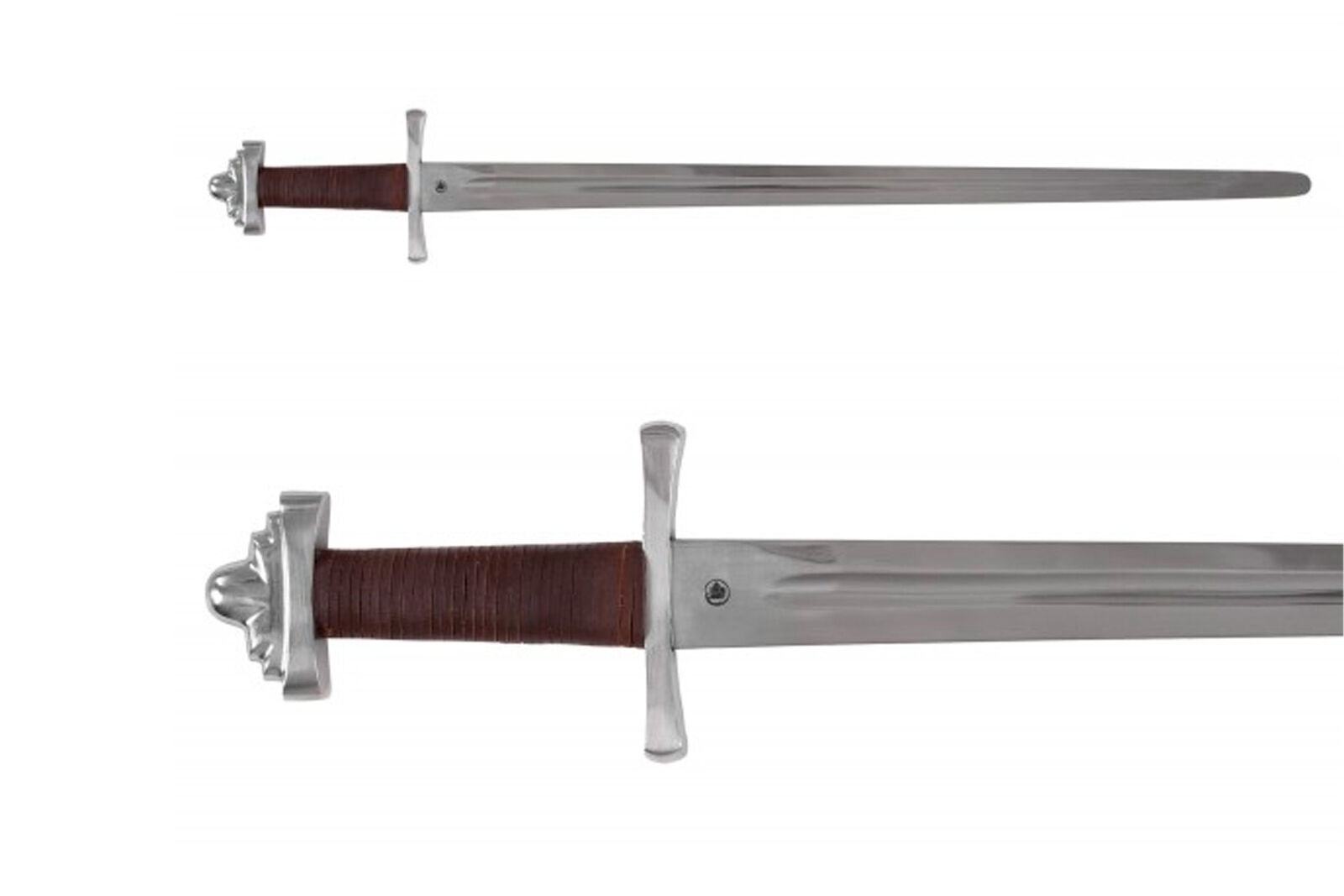-40%
Early Viking sword Godfred w. Sheath, Damascus steel sheet
$ 225.31
- Description
- Size Guide
Description
Early Viking sword Godfred w. Sheath, Damascus steel sheetEarly Viking sword Godfred w. Sheath, Damascus steel sheet
The original of this beautiful reconstruction was once handled by the dreaded Danish king Godfred (also called Gudfred or Gudr.d). Until his death in 810, King Godfred lived and ruled in Hedeby (also called Haithabu), the main Viking settlement on the Jutland Peninsula (near the town of Schleswig).
The sword dates back to the 8th century and its shape is characteristic of an early medieval Viking sword: a slightly curved forward short guard, a straight double-edged blade with a fuller distinctiveness, and a wide knob with three bumps.
This sword is made exclusively by hand. The protection and knob of three lobes are made of thermally treated malleable cast iron. The folded Damascus steel sheet has approximately 100 layers and is hand-riveted to the knob. The handle is wrapped with wide leather straps. The blade has a distinctive fuller that offers great flexibility and lower weight. The edges of the blades are not sharp.
The sword comes with a leather-lined wooden sheath and a sword belt made of cowhide.
The terms Damascus steel or welded pattern designate a forged composite steel from two or more different types of steel. It is named after its birthplace, the Syrian city of Damascus, an ancient bastion of stamped steel production.
As a common practice, a harder high carbon steel and a softer low carbon steel are repeatedly forged and bent. High carbon steel ensures greater hardness, better temperability and longer-lasting edge retention, while softer steel confers greater blade flexibility and tensile strength. This procedure, which arose at a time when steel grades were often low and inconsistent, allows the positive attributes of different steel grades to be combined.
In addition, the different nuances generated by the variable carbon content of the alternating layers engender surprisingly beautiful patterns, such as the twisted motif called the Torsion Damascus pattern or the Rose Damascus pattern. Undoubtedly, these unusual patterns partly explain why magical properties inherent in the Damascus steel leaves of the Middle Ages were attributed. Such a damasquinada sword blade is depicted, for example, as a bloody worm or a poisonous snake in the Edda.
Details:
Blade material: Damascus steel, 100 layers.
Overall length: approx. 94.5 cm.
Blade length: approx. 79.5 centimeters.
Max. blade width: approx. 43 mm.
Balance point: approx. 16 cm from the guard.
It includes a leather-lined wooden sheath.
Weight (without sheath): approx. 1250 g.
The use of this product, and of all the products offered on this website, will be the personal and exclusive responsibility of the person who uses it.









